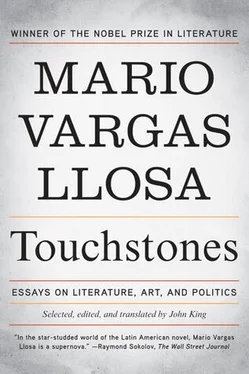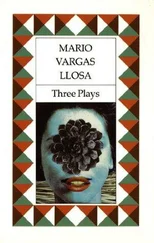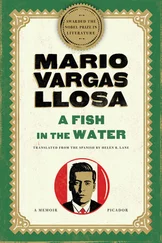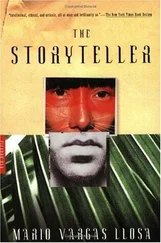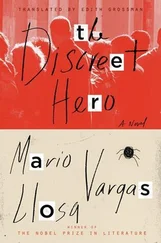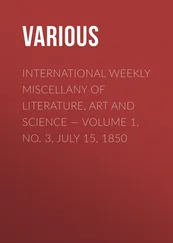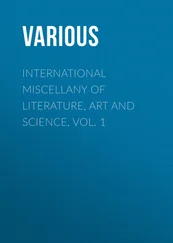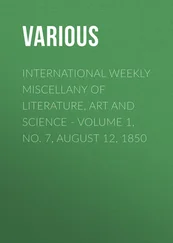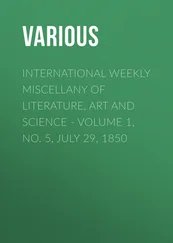The failure of this desired liberal model has been shown in recent months in Peru when, after one presidential term, post-Fujimori, of Alejandro Toledo, the surprise front-runner for the presidency was an army officer, Ollanta Humala, running on both a populist and indigenous ticket. It was only through an alliance of all parties opposing Ollanta Humala that Alan García was elected president in June 2006. García was the president in the late 1980s whose economic policies so incensed Vargas Llosa that he stood as the leader of a new political party that went on to contest the elections. The story of García is told in great detail in Vargas Llosa’s autobiography, El pez en el agua. Memorias ( A Fish in the Water. A Memoir , 1993). Vargas Llosa justifies his subsequent vote for García in 2006 in the following terms:
The victory of Alan García in the Peruvian presidential elections has been a serious setback for Hugo Chávez, the Venezuelan quasi-dictator, and his megalomaniac ambitions to create a group of loyal client states the length and breadth of Latin America that would follow the populist, nationalist and state-led model that is rapidly turning Venezuela into a typical little Third World republic. And it has probably saved Peruvian democracy from falling once again into another military authoritarian regime, led by Comandante Ollanta Humala, a confessed admirer of the dictator Juan Velasco Alvarado, the general who ended constitutional government in Peru in 1968 (democracy would only be restored some twelve years later). 12
García, then, rather than being a cause for optimism, is very much the lesser of two evils. Vargas Llosa’s dystopian vision, narrowly averted for now in Peru, sees the rise of the left in Latin America as being controlled by a Castro — Chávez axis, with willing amanuenses such as Evo Morales in Bolivia. For Vargas Llosa, the model of political democracy, economic growth and increased income distribution is represented by Spain or Chile.
While he is an outspoken advocate of liberal democracy and the market, and is scathing in his opposition to autarkic populism, Vargas Llosa today seems more conciliatory towards those that try to bring certain utopian ideas to this world. He has always been drawn to heroism, courage in the face of abuse, and idealism, and sees all these attributes in the early nineteenth-century French-Peruvian political activist, Flora Tristán, the grandmother of Paul Gauguin, and the subject of Vargas Llosa’s penultimate novel, The Way to Paradise . Hers was in many ways an exemplary life, full of incident and dedicated to a cause — the formation of a great international workers’ movement, a Workers’ Union, that would secure the rights of women — that Tristán believed in and campaigned for until her early death. Of Tristán Vargas Llosa says:
She was a bold and romantic campaigner for justice who, first in her difficult life, plagued by adversity, then in her writings and finally in the passionate militancy of the last two years of her life, offered an example of rebelliousness, daring, idealism, naivety, truculence and adventurousness which fully justifies the praise that she received from the father of surrealism, André Breton.
Tristán is without doubt one of les justes . Society may have little place for such figures, as Vargas Llosa argued in the case of Grass, and indeed, as he wrote of Gauguin, paradise may not be of this world. Nevertheless, for Vargas Llosa the world today needs les justes more than ever.
John King
Warwick University
31 August 2006
The house in Ladislao Cabrera Street in Cochabamba, where I spent my earliest years, had three patios. It was single-storey and very big, at least in my recollection of that period, which my memory preserves as an innocent and happy time. What for many people is a stereotype — the paradise of childhood — was for me a reality, although doubtless since that time this reality has been embellished by distance and nostalgia.
In this Eden, the main focus is the house with the solid front door that opened onto a hallway with a concave roof which sent back an echo of people’s voices. This led to the first, square patio, with its tall trees that were good for rerunning Tarzan movies, around which the bedrooms were laid out. The last year that we lived there, one of those rooms housed the Peruvian Consulate, which, for economic reasons, my grandfather moved from a building close to the Plaza de Armas to the family home. At the end of that patio there was a pillared terrace, protected from the sun by an awning, where my grandfather would nod off in a rocking chair. To hear him snoring, his mouth an open invitation to flies, made my cousins and me fall about laughing. From there, one entered the dining room that was always busy and noisy on a Sunday when the vast family tribe all appeared to savour the spicy dishes and that dessert prepared by grandmother Carmen and Mamaé that was everyone’s favourite: pumpkin fritters.
Then there was a small corridor, with the bathroom on the right, that linked the first to the second patio, where the kitchen, a pantry and the servants’ rooms were located. At the far end were wooden railings with a squeaky little door through which one could glimpse the third patio, which must have once been a garden with vegetables and fruit. But then it was just open ground: it was used as a corral and sometimes as a zoo, because on one occasion it housed a goat and at another time a monkey, both species brought by my grandfather from the country estate in Saipina, around Santa Cruz, where he had been sent from Arequipa by the Saíd family to start up cotton cultivation. And there was also a talkative parrot which imitated me and screamed ‘granmaaaaaa’ all day long. The laundry room was there, and lines with sheets and tablecloths and clothes billowing in the breeze that the washerwoman came to wash and iron every week. The gardener, Saturnino, was a very old Indian who carried me on his shoulders; the day the Llosa family returned to Peru, he came to the train station to see us off. I remember him, holding on to my grandmother Carmen, sobbing.
There were many people living there: grandfather Pedro and grandmother Carmen, Mamaé, my mother and I, uncle Juan and aunt Laura and their two daughters, my cousins Nancy and Gladys, uncle Lucho and aunt Olga. Their first daughter, Wanda, was born in the house one memorable afternoon when, caught up in the general excitement, I climbed a tree in the first patio to spy on what was happening. I could not have understood much because it was only later, in Piura and in 1946, that I learned how babies came into the world and how their fathers made them. Uncle Jorge also lived there until he married aunt Gaby, as did uncle Pedro, who turned up in Cochabamba to spend the holidays, because he was studying medicine in Chile. There were at least three employees in the second patio, together with two intermediate figures of uncertain status: Joaquín, an orphan boy that grandpa had found in Saipina, and Orlando, a boy who had been abandoned by a cook in the house who had disappeared without trace. Grandma Carmen ended up grafting them onto the family.
My cousin Nancy was a year younger than me, and cousin Gladys was two years younger. They were magnificent playmates, involved in all the adventures that I invented, which were usually inspired by the films that we saw in the Roxy Cinema and the Acha Theatre on Saturday matinées or Sunday morning screenings. The serials were wonderful — three chapters per performance, with the serials lasting for several weeks — but the film that touched us, and made us cry, laugh and, above all, dream, and that we went back to see several times (it convinced me that I should become a bullfighter), was Blood and Sand with Tyrone Power, Linda Darnell and Rita Hayworth.
Читать дальше
